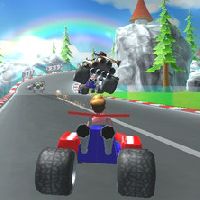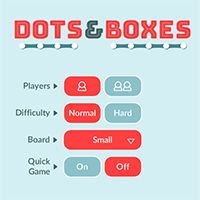SIMILAR GAMES
Description
Game Description:
Microwars is a futuristic, turn-based strategy game where players take on the role of rival factions vying for control of a dystopian world. In this high-stakes game, players must gather resources, build structures, and deploy units to outmaneuver their opponents and emerge victorious.
How to Play:
- Start by choosing your faction: Each player selects a unique faction with its own strengths, weaknesses, and playstyle.
- Gather resources: Players collect resources (Energy, Credits, and Rations) to build and upgrade structures, deploy units, and conduct research.
- Build structures: Construct buildings, such as barracks, factories, and reactors, to provide benefits and enhance gameplay.
- Deploy units: Recruit and deploy units, including infantry, vehicles, and air support, to engage in battles and defend your territory.
- Conduct research: Invest in research to unlock new technologies, units, and upgrades.
- Engage in combat: Battle against opponents in turn-based combat, using a combination of unit deployment, resource management, and strategic decision-making.
- Expand and defend: Expand your territory by conquering new areas, while defending your existing ones from enemy attacks.
Full Details:
Gameplay Overview:
Microwars is played on a rectangular map, divided into hexagonal tiles. Each player starts with a small territory and a set amount of resources. The game is divided into rounds, with each round representing a turn.
Resource Management:
Resources are crucial to gameplay. There are three types of resources:
- Energy: Used to power buildings and units.
- Credits: Used to construct and upgrade structures, as well as research new technologies.
- Rations: Used to heal units and maintain morale.
Players can gather resources by constructing resource-generating structures, such as mines, farms, and solar panels. Resources can also be stolen from opponents through sabotage or raids.
Building and Upgrading Structures:
Players can construct a variety of structures, including:
- Barracks: Produce units and upgrade existing ones.
- Factories: Produce vehicles and air support units.
- Reactors: Generate energy and provide additional resources.
- Research Facilities: Unlock new technologies and upgrades.
- Walls and Turrets: Defend against enemy attacks.
- Outposts: Expand territory and gain strategic advantages.
Structures can be upgraded to improve their effectiveness, such as increasing resource generation or enhancing unit production.
Unit Deployment and Combat:
Players can deploy units, including:
- Infantry: Foot soldiers with varying abilities and strengths.
- Vehicles: Ground-based units with enhanced mobility and firepower.
- Air Support: Aerial units providing reconnaissance, bombing, or air-to-air combat capabilities.
Combat is turn-based, with each unit having its own set of abilities, strengths, and weaknesses. Players must strategically deploy units, use terrain to their advantage, and manage resources to emerge victorious.
Research and Development:
Players can conduct research to unlock new technologies, units, and upgrades. Research focuses on areas such as:
- Unit enhancements: Improve unit stats, such as damage output or health.
- Structure upgrades: Enhance resource generation, defense, or production capabilities.
- New units: Unlock new units, such as elite troops or advanced vehicles.
- Advanced technologies: Unlock powerful technologies, such as advanced energy generation or enhanced resource gathering.
Victory Conditions:
The game ends when one player’s territory is completely destroyed, or when a player achieves a set amount of victory points. Victory points are earned by:
- Conquering new territory.
- Destroying enemy structures.
- Successfully defending against enemy attacks.
- Researching and developing advanced technologies.
Additional Features:
- Sabotage: Players can sabotage opponents’ structures, stealing resources or disrupting production.
- Raids: Players can launch raids to steal resources or destroy enemy structures.
- Diplomacy: Players can form temporary alliances to share resources, coordinate attacks, or negotiate peace treaties.
- Random Events: The game includes random events, such as natural disasters, economic crises, or technological breakthroughs, which can impact gameplay.
Conclusion:
Microwars is a complex, engaging strategy game that challenges players to balance resource management, unit deployment, and research to emerge victorious. With its rich gameplay mechanics, varied factions, and dynamic environment, Microwars offers a unique and captivating experience for fans of turn-based strategy games.
















































